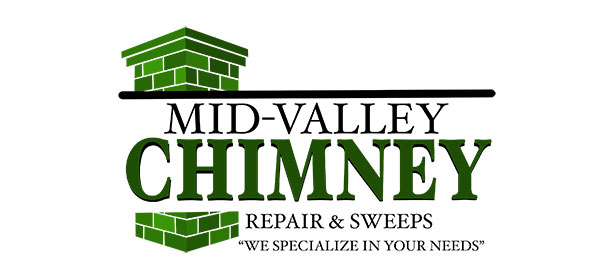Depend on Our Chimney Experts for Your Crown Repairs & Rebuilds
Chimneys may look like really simple structures, but they are made up of an intricate system of parts that work together to ensure that your fireplace works efficiently and safely. Keeping water out of your chimney is critical to extending its lifespan and it starts at the stop – the chimney crown. These chunks of concrete at the top of your chimney are vital to protecting your chimney from all sorts of issues, and our experts are here to ensure yours it built correctly and able to withstand it all.
If you need crown repairs or a rebuild, give us a call at 513-727-0994 or reach out to us online now.
What Is a Chimney Crown?
A chimney crown can be decorative and add to the curb appeal of your home, but it is – first and foremost – a functional element of your chimney. It is the concrete or masonry piece that sits on top of your chimney (the chimney cap is on top of the crown) and it diverts water away from your chimney and the sides of the structure.
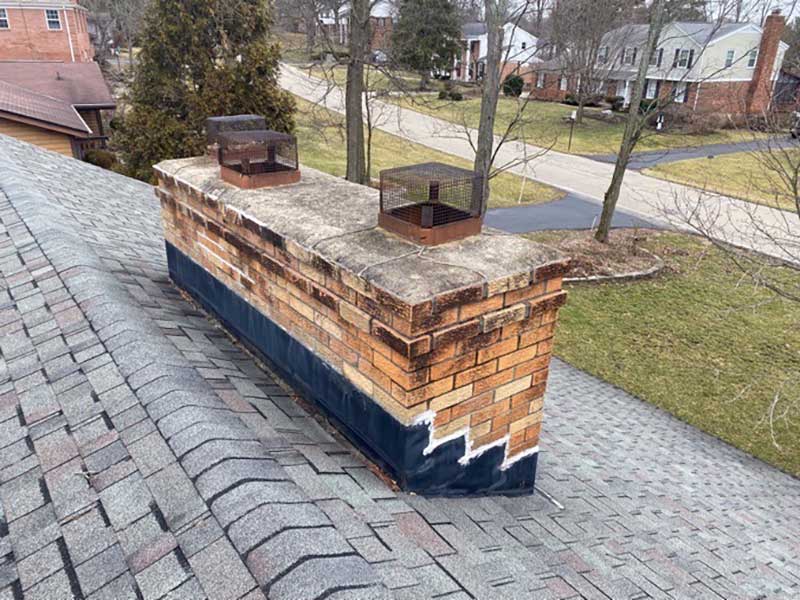
Crown Rebuild – Before
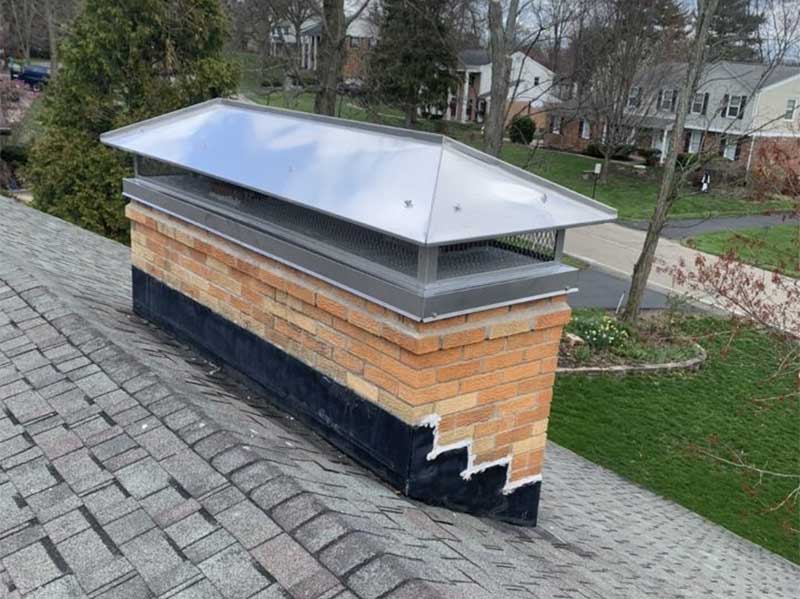
Crown Rebuild – After
Chimney crowns are usually made out of concrete, but they can also be stone or metal. Clay and terracotta are also materials for chimney crowns, but they are less commonly used.
Why is a chimney crown important?
Chimney crowns are a multipurpose part of the chimney system. Count on your crown to do the following for your setup:
- Protect Against Water: The main purpose of a chimney crown is to protect the chimney structure from the damaging effects of weather like rain, snow, and ice. It serves as a barrier between the flue opening and the great outdoors, preventing water from entering the chimney system. Water is a leading cause of chimney damage. Exposure to moisture can weaken a chimney in many areas including the masonry, mortar joints, and flue liner.
- Safeguard the Chimney Liner: The chimney crown helps protect the chimney liner, which is the inner layer that carries the byproducts of combustion out of your home. If water and debris get to the liner, it can lead to leaks, inefficiency, and other safety hazards.
- Keep Debris Out: A properly constructed chimney crown helps keep debris, such as leaves and twigs out of the chimney. It also acts as a gate that keeps small animals from choosing your chimney as their next home. An obstructed chimney is a hazard because it blocks the escape of smoke and harmful gases.
- Protect the Masonry Walls of Your Chimney: Because a chimney crown slants downwards, it helps to direct incoming water out and away from the sides of your chimney. This minimizes the risk of brick and mortar damage, and helps to ensure structural stability for the long haul.
Needless to say, if your crown is experiencing damage, the sooner you can get a certified and experienced chimney technician on the job, the better. Call us or reach out online today. The stability of your chimney depends on it!
Signs of Chimney Crown Damage
A damaged chimney crown is a serious problem and needs to be addressed quickly. As soon as your crown sustains damage, your chimney is that much more exposed to moisture and other hazards. If you suspect a chimney problem, but you aren’t quite sure, here are a few things to keep an eye out for:
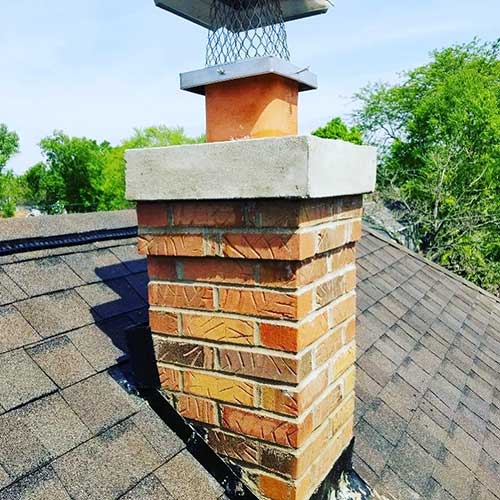
- Visible cracks in your chimney crown. Cracks must be fixed or filled no matter how big or small. Even if it doesn’t seem like a big deal, cracks don’t repair themselves and will grow larger. Water only needs a small opening to seep into the brick.
- Falling chimney tiles. When parts of your chimney start to fall off, something is wrong. Falling flue tiles may be a sign of chimney damage due to a failing crown.
- Rusted firebox or damper. Rust is a tell-tale sign of water entering your chimney. If you notice rust or discoloration on your metal components, the crown should be one of the first places on your radar.
- Crumbling mortar joints. Chipping or crumbling mortar joints are a sign that water has entered your chimney and started to cause damage. A properly built crown can prevent this type of damage, so be on the lookout, and don’t rule out your crown as a possible culprit.
- Spalling bricks. When you spot brick damage of this level, your water problem is likely severe. Call Mid-Valley Chimney as soon as possible to schedule an inspection. Spalling brick can be dangerous and is a structural issue, so the sooner we can repair it – and then find the cause of it – the better.
Why Did My Crown Get Damaged?
There are a few reasons your crown could be facing damage. Regardless of the issue, your next step should be hiring an experienced team to get it rebuilt before you light any more fires.
- It’s not made of the right materials. One of the biggest reasons crowns fail is because appropriate materials weren’t used when they were originally constructed. Chimney crowns should be built with a durable Portland cement-based mixture, but many crowns of the past were built with less reliable mortar mixes. If this is the case for you, yours will likely break down prematurely.
- It isn’t waterproofed. If your crown isn’t waterproofed, it will be a lot more vulnerable to water damage and the freeze/thaw cycle. And the more it breaks down, the more the rest of your system will suffer, too.
- It wasn’t built right. There are certain dimensions crowns should meet in order to stand stronger for a long period of time. For instance, they should be at least 2 inches thick at the thinnest point, and they should overhang past the edge of the chimney a couple of inches, too. If these requirements aren’t met, they won’t be able to do their job as effectively, and they’ll likely break down sooner than expected, too.
- Damage wasn’t promptly addressed. With any component of your chimney, the sooner any damages are addressed, the better off you’ll be. Once decay and deterioration begin, it will only worsen, meaning you could wind up with a big repair, rebuild, or restoration job if you put it off.
What Are Some Crown Repair Options?
Now, when it comes to addressing damages to your chimney crown, there are a few different routes to take. If possible, we’ll do what we can to repair your crown, without having to complete any work that’s too exhaustive. Other times, it may need to be rebuilt altogether.
Repairing the Chimney Crown
If the damage isn’t extreme, we may be able to repair the crown by patching up cracks, holes, and gaps. We’ll always do what we can to get your system back into shape in the least invasive way possible, so you can spend less and get back to enjoying your system sooner.
Sealing the Chimney Crown
If your chimney crown only has a few small, minor cracks, a chimney crown waterproofing sealant may be a suitable option for your repair job. A waterproof sealant is applied over cracks to help prevent water from soaking through the brick, mortar, and concrete. When properly applied, sealing the chimney can extend its lifespan by several years.
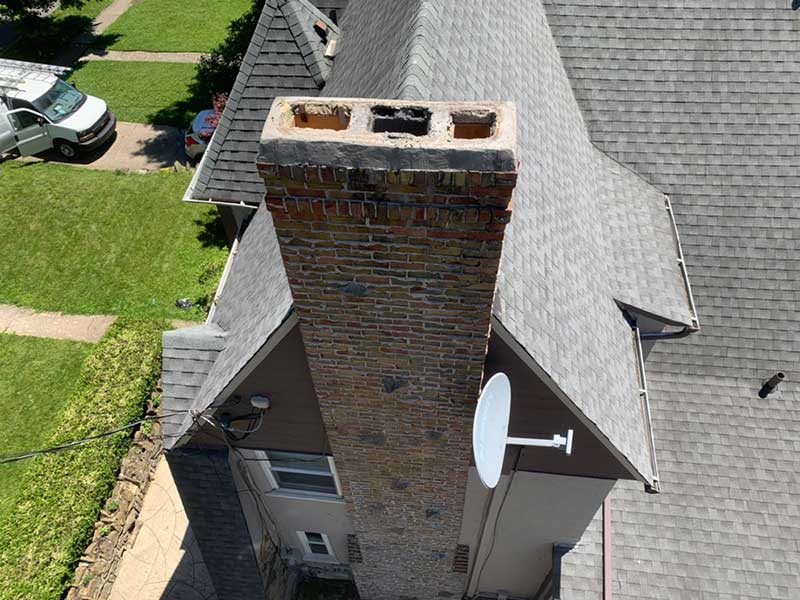
Concrete Crown and Flue Tiles Before
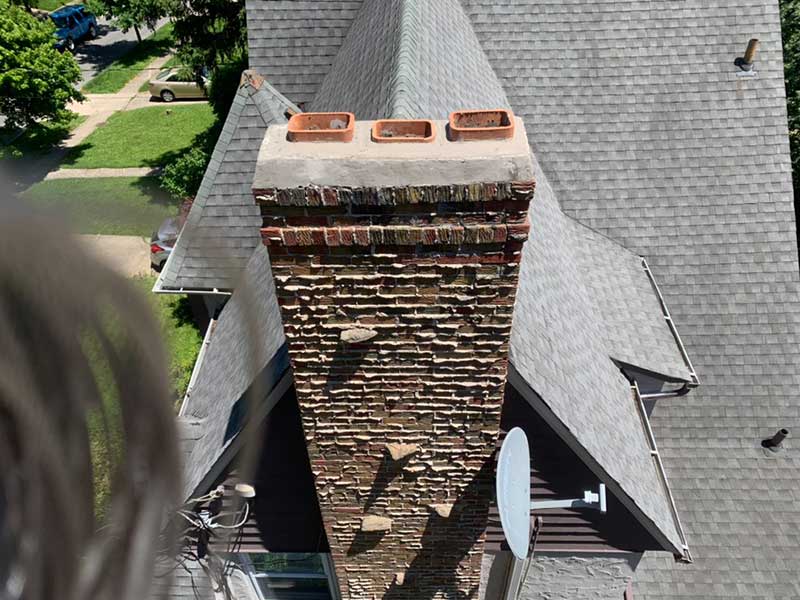
Concrete Crown and Flue Tiles After
Rebuilding the Chimney Crown
There are those unfortunate situations where sealing or repairing a chimney crown isn’t a viable long-term or cost-effective solution, and you have to think about rebuilding it. It may not be the outcome you want, but sometimes it’s the right route. If the chimney crown has large cracks, missing pieces, or is showing signs of structural issues, a rebuild will be in order.
If you need a chimney rebuild, one of our technicians will remove the existing materials and replace them. A rebuilding job should take about a day or two, but times may vary based on your unique situation.
How Often Does a Chimney Crown Need To Be Replaced or Rebuilt?
Craftsmanship and maintenance are the keys to longevity when it comes to chimney crowns. A well-built chimney that is properly cared for can last up to 50 years, or even longer. The Chimney Safety Institute of America (CSIA) suggests that homeowners have their chimneys inspected at least once a year and we highly recommend this practice as well. Inspections are the easiest way to find small issues before they grow into massive repair or rebuild jobs and they can ultimately save you a lot of time and money.
How Much Does It Cost To Rebuild a Chimney Crown?
Chimney repairs can range in cost depending on the scope of the job, the location and size of your chimney, and the materials used originally. In the end, we won’t be able to give you a solid price point until we’ve assessed the situation. One of our technicians will need to inspect your chimney for damage before we can outline a cost.
An inspection can reveal more issues that need to be corrected before we can proceed with rebuilding. On the other hand, our overview might confirm that sealing the chimney crown may be a better alternative than a full rebuild. As you can see, situations vary, so call us today to set up your appointment. Once the inspection process is completed, we can move forward from there.
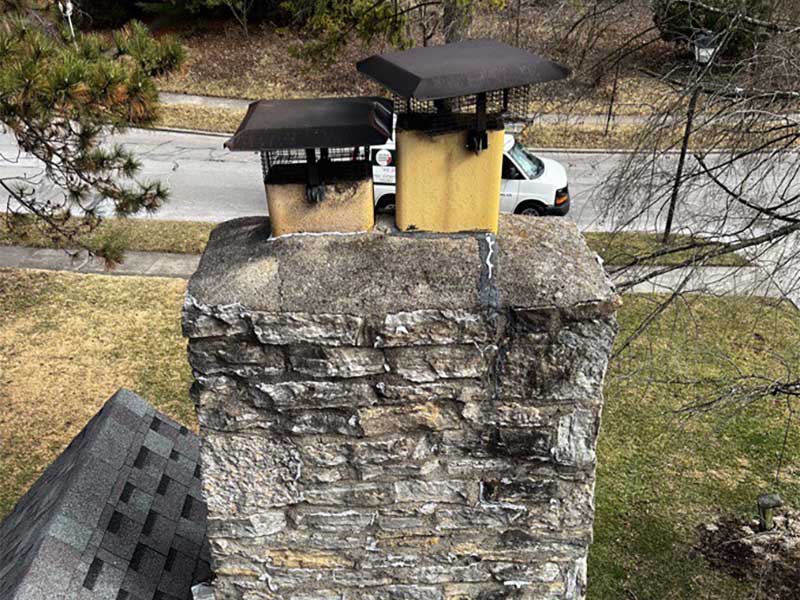
Concrete Crown and Chimney Cap Before
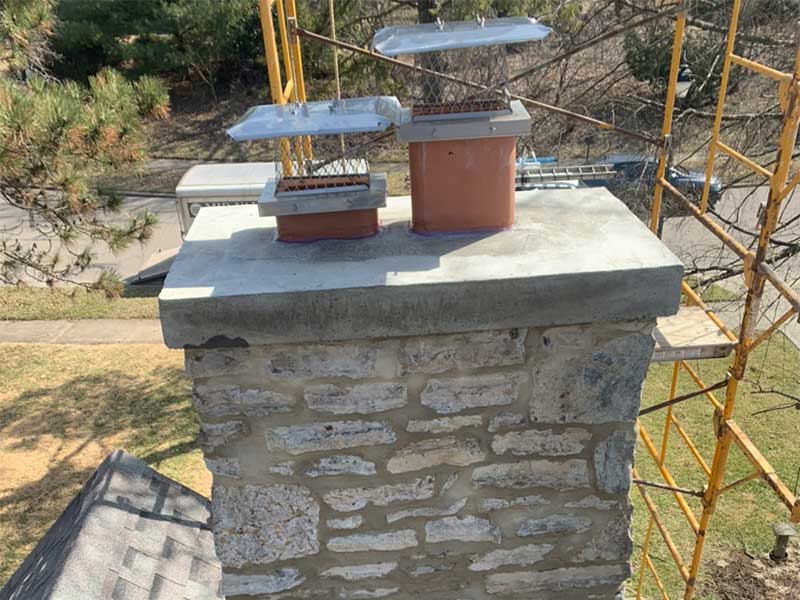
Concrete Crown and Chimney Cap After
Why Can’t I Rebuild My Chimney Crown Myself?
There’s no rule stating that you can’t attempt to rebuild your crown on your own. Do-it-yourself home improvement projects are on the rise thanks to Youtube tutorials and HGTV shows. So, sure, if you have experience working in construction or handiwork, you can attempt to repair or rebuild your crown. That said, remember that this is a big job, and even the most handy DIY-er might struggle.
Now, if you’re new to the world of home repairs, it’s definitely best to let a professional chimney tech tackle this job. Rebuilding the crown incorrectly will leave your chimney exposed and will only cause more damage, which will then be expensive to fix down the line. In addition, a repair of this nature requires you to work at elevated heights, so you would need safety equipment like helmets, harnesses, and rope.
At Mid-Valley Chimney, we already have the experience and equipment to get the project done right – and done safely – the first time. There is no need to put your safety and resources at risk. Call us out today or book your next appointment online. We’d love to get started soon.
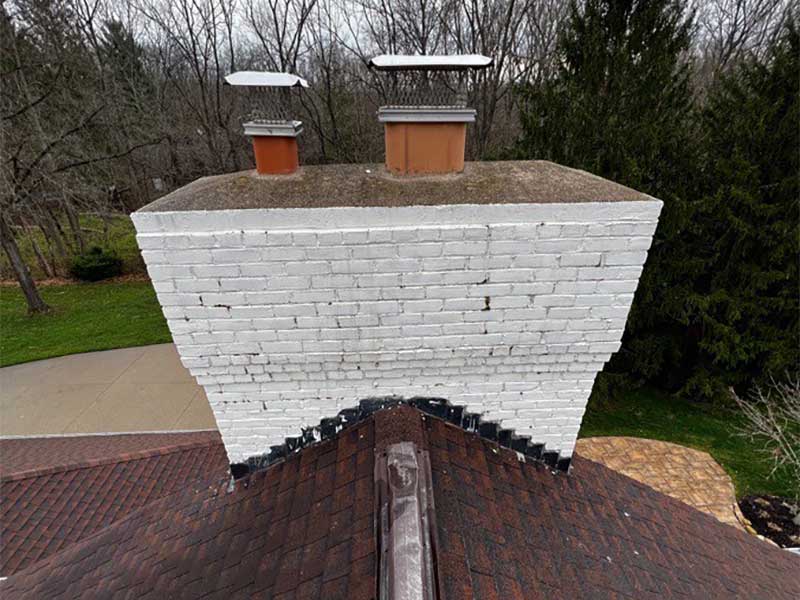
Complete Grindout and Retuckpoint Before
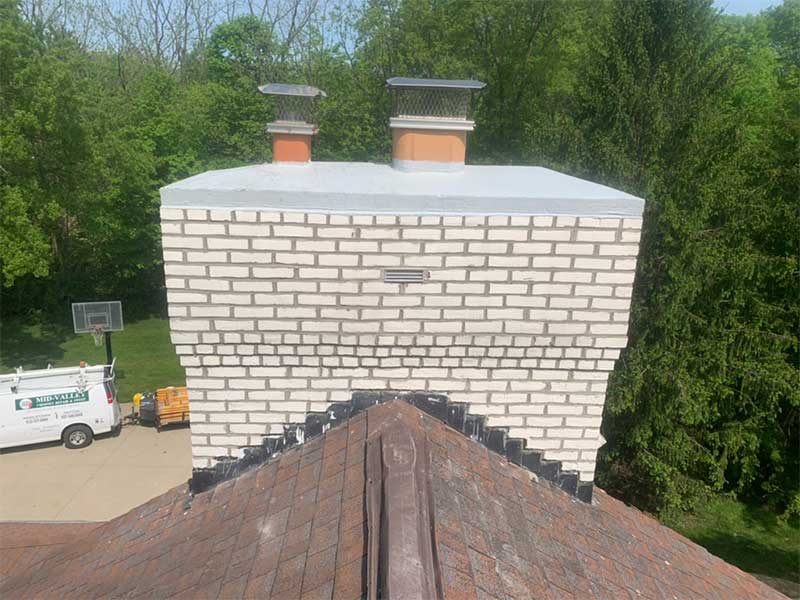
Complete Grindout and Retuckpoint After
Schedule an Appointment With Mid-Valley Chimney Now
If neglected, cracks in your crown will only worsen, and it won’t be long until the rest of your system is affected too. Your bricks and mortar will start to decay and crumble, metal components will rust, and your home’s interior will also be prone to damage (think rotted woodwork, peeling wallpaper, and ceiling stains).
Count on us to do it correctly from the beginning. Our CSIA-certified techs are experienced in crown repairs, and we have the tools and knowledge to offer the quality results you’re hoping for.
Call us now at 513-727-0994 or reach out online. Our customer service can get you scheduled or answer any questions you may have.
Getting a professional chimney waterproofing is one of the best ways you can fix a leaky chimney.
